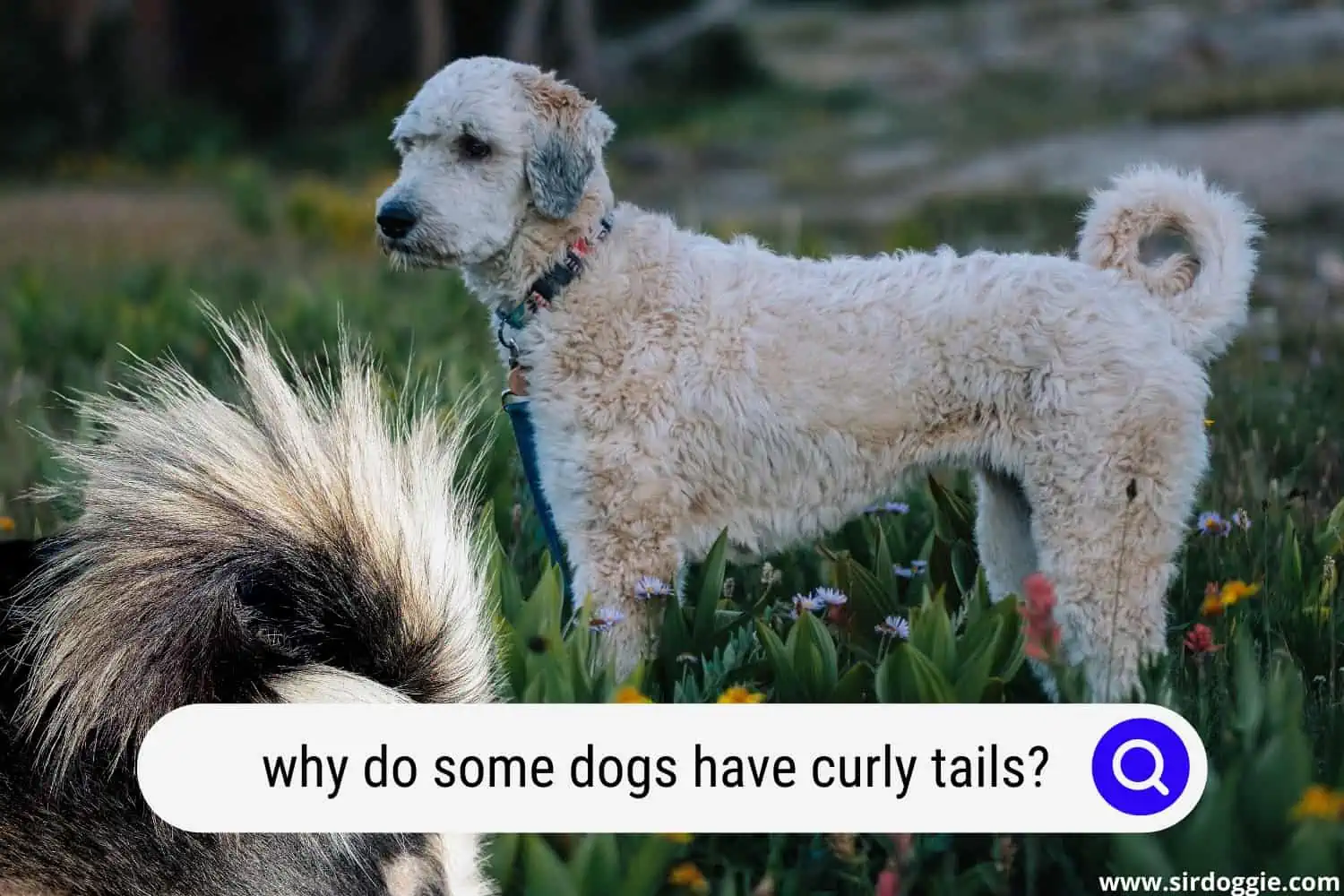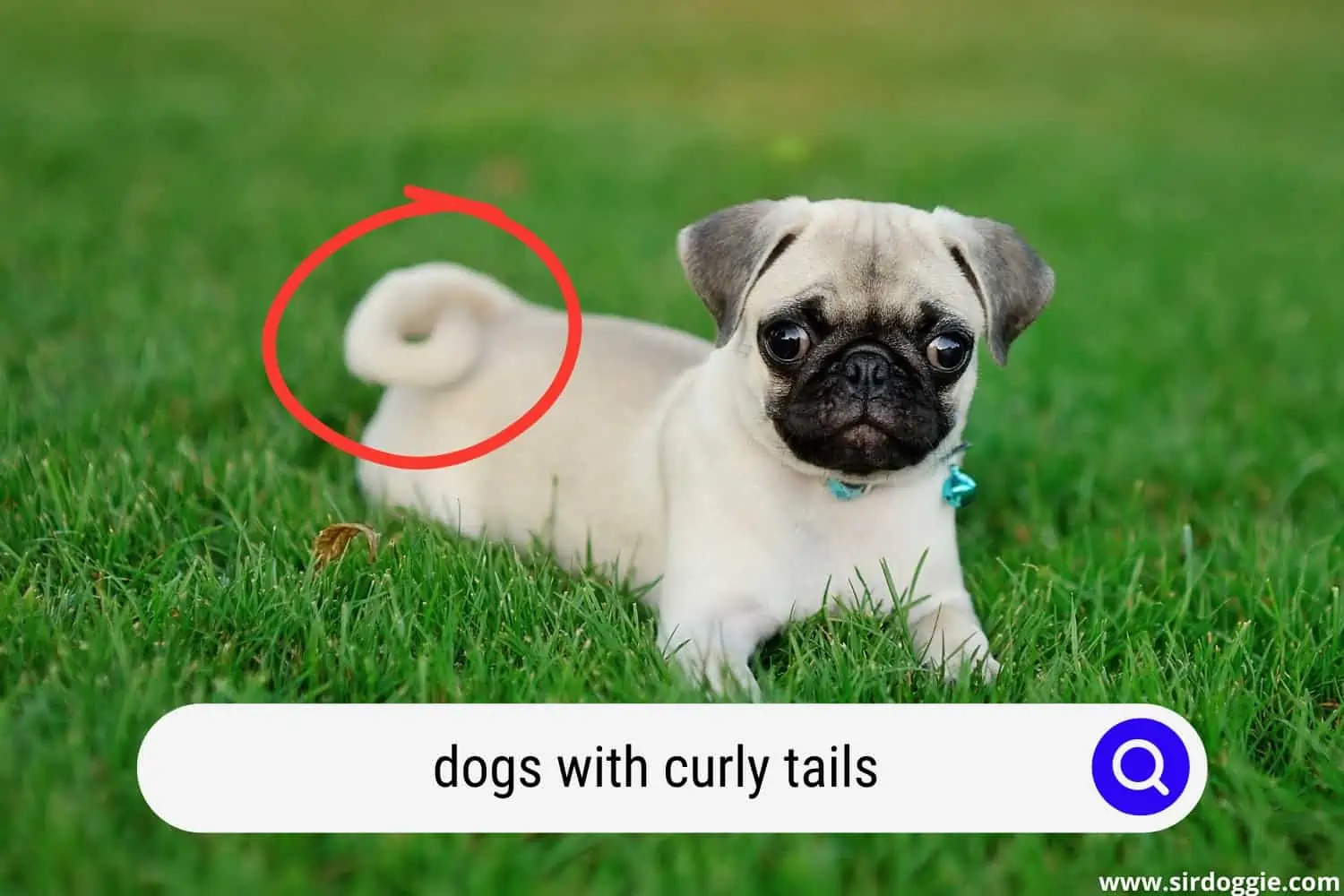Why Do Some Dogs Have Curly Tails? (Explanation)
Curly tails in dogs are caused by hemivertebrae which means that the dog’s vertebrae have either fused together or are shaped more like a wedge. It’s common in breeds like Pomeranians and Pugs and not something pet parents need to be concerned about.

Some dogs are born with curly tails. Sometimes it’s specific to their breed, sometimes it just happens due to genetics. Either way, dogs with curly tails are usually something to celebrate rather than worry about.
When curly tails do pose an issue, there are usually warning signs such as the breed not normally having curly tails; back trouble for the dog; the tail’s curl progress over time, and/or pain for the dog.
But before you freak out and run to the vet, you should know that a curled tail rarely poses an issue.
So, if you’re a pet parent, let’s look at what curly tails are, why they exist, and some of the warning signs for tails that aren’t supposed to be curled.
Related Reading: Why Do Samoyeds Curl Their Tails?
What Are Curly Tails in Dogs Exactly?
If you have a dog, you’ve probably wondered at some point whether or not a particular trait of theirs was “normal.” It’s true that most dogs have straight tails, and that the tail is an extension of the spine, so seeing a curly tail might catch you off guard.
Perhaps your own dog has a curly tail, or perhaps you’ve seen someone else’s dog with a curly tail, and curiosity got the best of you, but no matter your reasoning for wondering, you’ve come to the right place.
The tail is part of the spine, so if your dog’s tail is curled, it means its spine is curved, but before you freak out and run to the vet, you should know that a curled tail very rarely poses an issue.
If your dog has genetically inherited a curled tail, it’s most likely that only its tail (and not its whole spine) is affected by whatever genetic condition caused it.
Though technically a genetic “disorder,” curled tails rarely cause issues for dogs, so it’s more accurate to think of it as a trait typical of certain breeds.
Why Do Some Dogs Have Curly Tails and Not Others?
Before we get into the specifics of curly tails, it’s important to understand how different dog breeds came into existence. Why are some breeds large while others are small? Why does some dog breed’s hair grow long if it is not regularly cut while others shed? Why do some breeds have long snouts while others have squashed faces?
It all comes down to evolution—a sort of artificial selection that was implemented by humans long ago and continues to be in practice today. We breed dogs with similar traits in order to produce offspring with that trait.
Do this for several centuries and it becomes clear why there is so much variety between breeds—for example, long-snouted dogs are deliberately being bred with other long-snouted dogs, and squashed-faced dogs are deliberately being bred with other squashed-faced dogs.
This is also the reason certain breeds are unfortunately more prone to genetic issues. When a dog is only reproducing with dogs that look like and have similar genes to, it, the gene pool is much smaller overall.
Health Complications Due to Curly Dog Tails
Here are some possible signs that should warrant concern and an examination from a veterinarian should your dog’s curly tale be causing health issues.
Breed
If your research leads you to the conclusion that your dog’s breed does not typically possess a curled tail, it won’t hurt to take your pet to the vet and get it checked out.
It’s most likely not a big issue, but your vet can explain possibilities to you and perhaps set your mind at ease.
Keep in mind that if your dog is a mutt (meaning you don’t know what breed(s) they are), it’s perfectly possible that he inherited their curly tail genetically. If your pup is purebred, however, and this breed is not a curly-tailed breed, you have more reason for concern.
Back Trouble
Scoliosis is not just a human problem but can also present itself in dogs. Luckily for you, a simple glance at your pet’s back for abnormal curves is usually enough to be reasonably sure that your pet does not have it.
Keep in mind that curly tails should not affect the rest of your pet’s spine. If your pet has back problems, a visit to the vet is certainly warranted (these problems are likely not related to their curly tail, however).
Progression of Curl
Did your pet have a curly tail when you adopted him, or did their tail become curly over time? The first is a sign of a harmless genetic trait while the second could mean your pet has a degenerative or progressive spine issue.
Pain
This is the most basic and obvious way to know if your pet is doing all right, yet so many pet parents forget to check it. Is your pet in pain? Do they often whine without explanation?
Do they seem distressed? Or are they perfectly happy and cheerful most of the time? Back problems are known to cause pets discomfort, so if that’s not the case for your pooch, there’s probably nothing serious going on.
When should I worry about Curly Tails in Dogs?
When a certain trait is usually harmless but occasionally a sign of a more serious problem, it’s natural to wonder how to tell the difference. We’ve listed several warning signs for you below that should help you to know with certainty whether or not to be concerned.

Curly Dog Tails, It’s a breed thing
As a result of the breeding process mentioned above, certain breeds simply have curly tails (especially purebred members of those breeds), and it’s not a cause for concern.
Some of the most common breeds known for having curly tails are pugs, Shiba Inus, Samoyeds, Tibetan mastiffs, Siberian Huskies, and Pomeranians.
If you’re really worried about your dog’s curly tail, look up their breed and see if curled tails are a trait common to that breed. The list above is by no means comprehensive, and if your dog is of a relatively rare breed, he might not be included.
At least then you’ll have some reassurance if you know that their curled tail is normal for their breed.
Final Thoughts
Hopefully, we’ve addressed some of the concerns you’ve been having regarding the question, “Why do some dogs have curly tails?”
Most simply put, it’s a breed thing, and asking why some dogs have curly tails is not much different from asking why some dogs have pointy ears or why some dogs shed.
Because the tail is part of a dog’s spine, it does mean that the end of their spine is curved, which sounds bad in theory but in reality, tends to have no negative repercussions for your pet.
If your pup has a curly tail but shows no other signs of spinal trouble, you’re probably safe to assume that you parent a perfectly healthy, happy dog.

Family Dog Expert Author
Hi there! I’m Stuart, a devoted dog lover and family dog expert with over a decade of experience working with our furry companions. My passion for dogs drives me to share my knowledge and expertise, helping families build strong, loving bonds with their four-legged friends. When I’m not writing for SirDoggie, you’ll find me hiking, playing with my beautiful dog, or studying music.